8 TIPS TO ELIMINATE BENCH PRESS SHOULDER PAIN
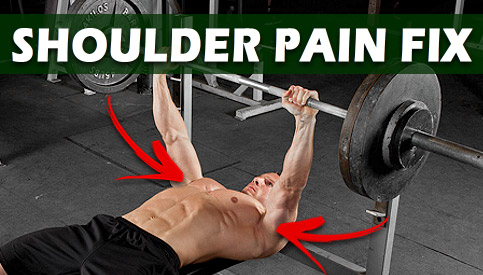
The shoulder is the most complex joint in the entire body, and most serious lifters will typically experience some form of shoulder pain at some point during their training career.
One of the most common sources of nagging shoulder pain is the barbell bench press.
Although this is one of the most common “staple” lifts in most training routines, it can place a lot of undo stress on the shoulder joints when performed incorrectly.
It might seem like a very simple exercise on the surface, but the reality is that there are many small subtleties to take into account if you want to maximize chest stimulation and minimize injury risk.
If you’re being held back by stubborn bench press shoulder pain that won’t seem to subside, this post will outline 8 tips you can apply to get back on the road to bench pressing pain-free.
8 Tips To Eliminate Bench Press Shoulder Pain
#1 – Do A Proper Warm Up

Performing a proper warmup can reduce shoulder pain by increasing core temperature, lubricating the joints with synovial fluid, improving range of motion, and activating the muscles and central nervous system before those heavy benching sets to come.
This is an often overlooked aspect of a safe and effective workout but can go a long way in reducing injury risk and improving overall workout quality.
I won’t go into all of the exact details here, but you can check out my complete step-by-step upper body warmup for a simple 10-15 minute sequence you can use before your bench press sessions.
It includes a good mixture of dynamic movements, self-myofascial release exercises, and stretches to get those shoulders warmed up and ready for the work ahead.
#2 – Stop Going So Heavy
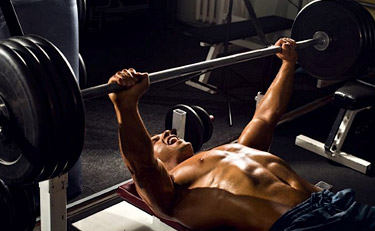
Here’s the bottom line…
If you’re unable to bench press the weight using proper form and a full range of motion without the help of a spotter, it’s too heavy for you. Period.
Every time I enter the gym it’s a virtual guarantee that at least one guy will be there pumping out sloppy, uneven partial reps (aka “ego lifting”) on the bench press while his training buddy lifts half the weight for him, yet it gets no less cringe-worthy every time I see it.
Going excessively heavy isn’t going to build your chest more effectively if your form is being compromised as a result. All it’s going to do is increase the strain on your shoulders, elbows, and wrists while reinforcing your bad lifting technique.
If you’re serious about eliminating that unwanted bench press shoulder pain for good, it’s imperative that you leave your ego at the door and only use weights you can truly handle in proper form.
#3 – Tuck Your Elbows
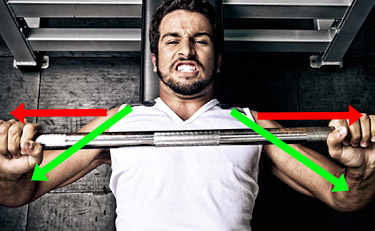
While flaring your elbows out at 90 degree angles theoretically places more tension on your pecs due to the increased range of motion, it can be pure suicide for your shoulders as you progress to heavier and heavier weights.
You may feel fine bench pressing with flared elbows right now, but it will almost certainly catch up to you as the stress accumulates with each passing week and month.
The goal when bench pressing should be to strike a healthy balance between stimulating your pecs effectively while protecting your shoulder joints at the same time.
You don’t need to overly exaggerate this (doing so will shift more of the stress onto your triceps), and an angle of about 75 degrees should do the trick as seen above.
#4 – Retract The Scapula
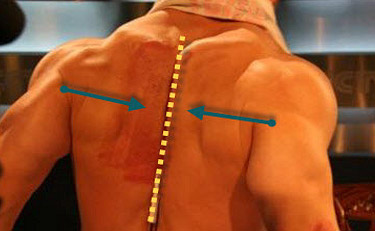
When you bench press with your shoulder blades flat against the bench, your shoulder joints end up taking on a lot more stress than they need to.
This is because the shoulders lose their solid contact with the bench and have nothing to properly drive backward against.
In order to stabilize your shoulder joint and prevent potential injuries, make sure to retract your scapula and maintain that position throughout the entire exercise.
A good cue for this is to squeeze your shoulder blades together and then imagine that you’re “putting them in your back pocket”.
Keeping a small arch in your lower back will assist with this as well.
#5 – Use The Correct Grip Width
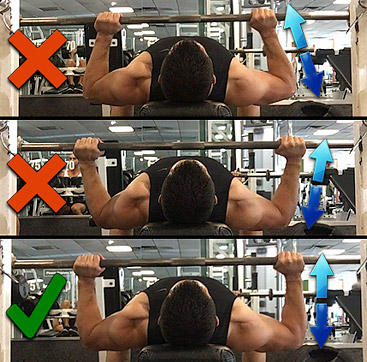
Going too wide or too narrow on the bench press places your forearms into an unnatural angle that not only decreases your strength but also increases the stress on your wrists, elbows, and shoulders.
Everyone has a different body structure in terms of limb length, and for that reason there’s no single grip width that will be perfect for everyone.
The central goal is to grip the bar using a width that causes your forearms to be vertical at the very bottom of the exercise with your wrists and elbows directly stacked on top of each other.
Play around with this using a lighter weight until you find the proper width, and you can also videotape yourself from behind the bench to make sure you’ve found the correct position.
#6 – Pull Just As Much (Or More) Than You Push
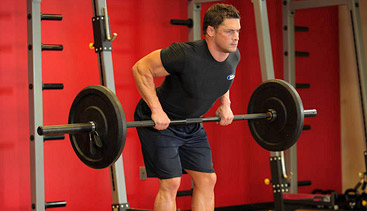
Most trainees spend way too much time on pushing exercises, and too little on pulling exercises. This can cause muscle imbalances over the long term that eventually lead to bench press shoulder pain.
This is especially true when it’s paired with sitting at a desk in a hunched over position like so many of us do, leading to increased tightness in the pecs, biceps and upper traps.
When those muscles overpower your postural (back) muscles, you may develop a kyphotic posture which will in turn cause excessive tension in your shoulder girdle and possible shoulder impingement.
Shoulder impingement syndrome is an injury in which the tendons of the rotator cuff muscles are inflamed and irritated, leading to pain, strength loss and decreased range of motion.
Aside from ensuring that you maintain proper posture throughout the day, you can also counteract this by performing at least the same amount of volume on pulling exercises as you do on pushing exercises.
Exercises that train your lower and middle trapezius, rhomboids, and rear delts are especially important, such as rowing variations, face pulls and reverse flies.
#7 – Strengthen Your Rotator Cuff Muscles
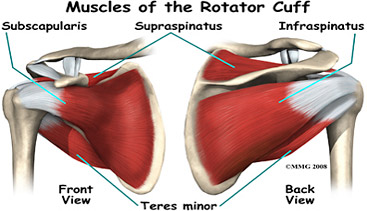
A frequent cause of bench press shoulder pain is an imbalance between the primary movers (chest, shoulders and triceps) and the rotator cuff, a group of four smaller muscles responsible for stabilizing the shoulder joint.
These four muscles are the supraspinatus, infraspinatus, teres minor, and subscapularis. The infraspinatus and teres minor – both external rotators of the humerus – are often underdeveloped.
You’re only as strong as your weakest link, and if you’ve been suffering from bench press shoulder pain that won’t go away, strengthening your rotator cuffs can be a helpful step in the process.
The complete details of proper rotator cuff training are beyond the scope of this article (you can find plenty of information with a bit of further online research), but one of the main exercises to focus on is a basic external rotation:
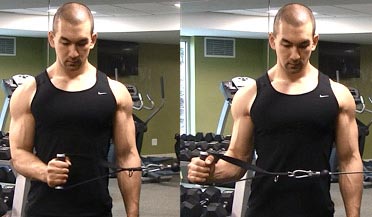
Keep the weights light and perform the movement using a strict, slower cadence for higher reps.
Just make sure to save this (and any other rotator cuff exercises you include) for the end of your training session, as you don’t want to pre-fatigue your rotator cuffs before your actual workout since this will likely decrease shoulder stability.
#8 – Focus On The Dumbbell Press Instead
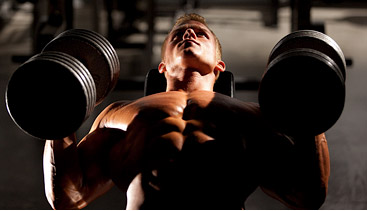
If you’re a powerlifter, barbell bench presses are an obvious must.
If you’re training primarily for muscle growth however, a standard barbell bench press is not a mandatory lift that you absolutely must do.
Despite their popularity, barbell presses don’t possess any “magical” muscle building benefits, and if they continue to aggravate your shoulders despite making all of the adjustments above, switching to a dumbbell press is probably a wise move.
Dumbbell presses allow for a more natural range of motion since you can press in an arching movement as opposed to being locked onto a fixed bar.
Dumbbells also allow you to tuck your elbows more easily, and if your shoulder pain is especially bad, you can even press with your palms in a neutral position for an even more shoulder-friendly variation.
If you aren’t ready to ditch the barbell press altogether, the other option is to just use a dumbbell press as your primary chest exercise and perform your barbell presses afterwards with a slightly lighter weight once your chest, shoulders and triceps are more fatigued.
Bench Press Shoulder Pain: Conclusion
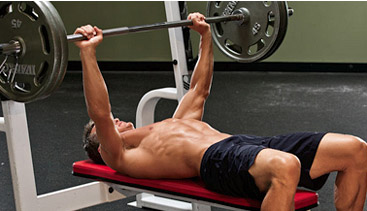
Any nagging injury can be quite an annoyance for the serious lifter, and bench press shoulder pain is no exception.
Luckily, most trainees can significantly diminish or even eliminate their pain altogether using the right knowledge and approach.
Implement the 8 tips above and you should see a marked improvement within a few weeks.
If you found this article helpful, make sure to sign up for your FREE custom fitness plan below...




